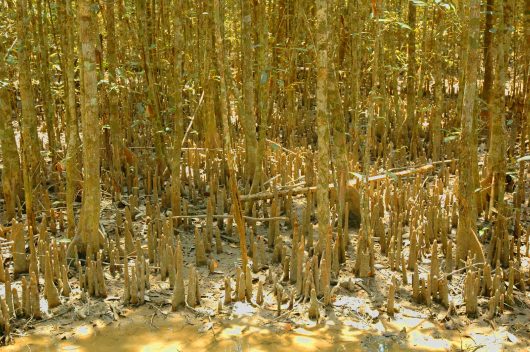Efforts Made to Mitigate Climate Change in Bangladesh

According to the 2015 Climate Change Vulnerability Index, Bangladesh’s economy suffers the most from climate change compared to any other country in the world. Such impact greatly depresses Bangladesh’s annual GDP, as the nation diverts most of its financial resources toward the management of climate change impacts.
Risky Location
Geographically, Bangladesh is a low-lying country that is predominantly comprised of flatlands. The economy is very dependent on the success of agricultural advances and yields, yet this facet is challenged by climate change. In 2012, the National Committee for International Cooperation and Sustainable Development (NCDO) lists the different natural disasters and impacts from global warming and climate change in Bangladesh, which includes: floods, tropical cyclones, salinity intrusion and fluctuations between extreme temperatures and drought.
All of these have resulted in decreased crop production and arable land for agricultural practice.
The nation’s government is working hard to address climate change in Bangladesh and further efforts of mitigation. Bangladesh has invested more than $10 billion dollars into its mission, and these funds go toward coastal resilience projects, increasing the number of government agencies that respond to emergencies and building coastal shelters.
Rising Sea Levels
Rising sea levels is one of the biggest concerns faced by the community. An article in the Scientific American discusses that the melting of glaciers in the Himalayas due to rising temperature has been a significant contributor to the rising water levels the country faces. For example, Sandwip Island has “lost 90 percent of its original 23-square-miles,” author Robert Glennon reports.
The projects that the government has developed are beneficial as current fixes to the issue of climate change. Any family that is affected by rising water levels or a cyclone are able to take refuge in one of the shelters the government has built. The coastal embankment projects have worked create more durable islands. They accomplish this by laying sandbags on the coastline as well as building trees to help barricade the islands and absorb some of the water increases.
Long-Term Mitigation Efforts
For more long-term mitigation techniques, the Bangladesh government is addressing the need for more energy-efficient initiatives in rural areas that are most affected. For example, the World Bank supports initiatives such as building 320 solar irrigation pumps for farmers, offering training on electrical-alternative livelihoods for the poorer households in the community and the installation of energy-grids to help power rural businesses.
While the impacts of climate change in Bangladesh are felt the most out of almost any other country in the world, Bangladesh emits one of the lowest percentages of gas into the atmosphere. This means that as a nation, it is contributing very little to the climate change that so affects it as opposed to developed countries that emit levels in the double digits. Luckily, the community in Bangladesh is well-equipped with a resourceful and intelligent government that delivers climate resilience while also accomplishing societal development.
– Caysi Simpson
Photo: Flickr
